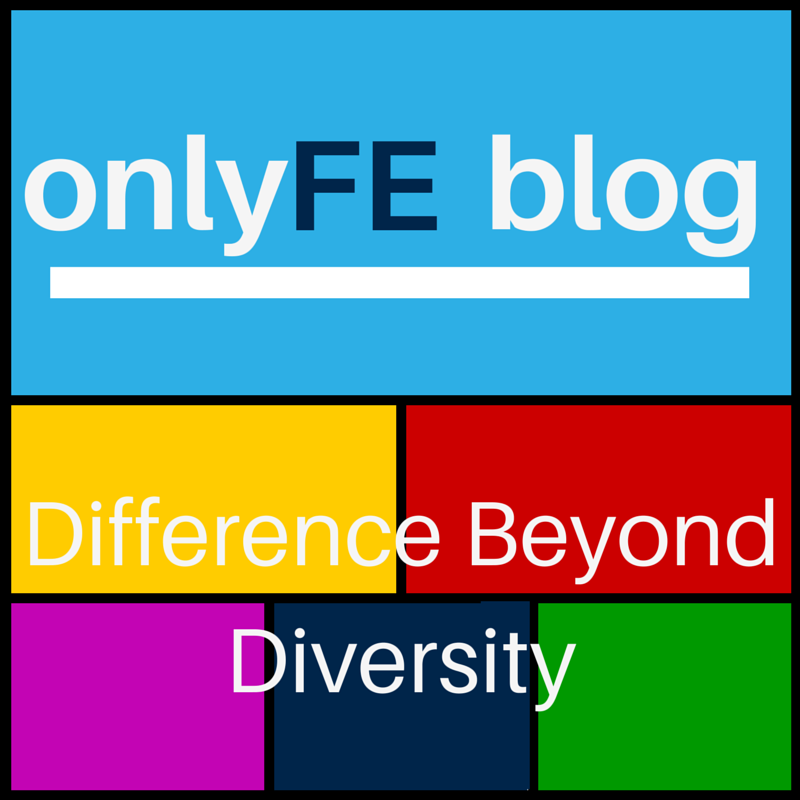7 JUL 2015
Difference beyond diversity
Since I started working in HR, what seems like many moons ago, I have noticed a shift in how we talk about the topic of Equality and Diversity.

Guest post by Paul Simpson, Head of HR at Rotherham College.
Since I started working in HR, what seems like many moons ago, I have noticed a shift in how we talk about the topic of Equality and Diversity. Firstly, it seems to me that the term ‘Equality’ has become almost redundant whilst the term ‘Diversity’ is used much more often. I think one reason this is the case is that Equality almost implies a minimum standard. That we should seek to treat all humans equally seems to be now almost universally accepted, at least in principle. There is now little place in society for those who argue that we should treat others differently based on any protected characteristic. This is fantastic to think when for people like me in their 30’s it is still in living memory that gay people could not serve openly in the US military, or that Nelson Mandela walked free from Prison and changed the face of South Africa.
The difference with diversity
'Diversity' seems rather to suggest that our expectations as a society have moved beyond equality, and that we’ve recognised that living and working with people different to ourselves only improves our society. There is an increasing range of research to suggest not only does diversity increase performance, but that a lack of it definitely impacts negatively too. This comes from sources such as Deloitte, McKinsey and the American Sociological Association.
So if diversity is one step beyond equality, where does it go next?
Well, diversity is often talked about in terms of protected characteristics, those being defined in the Equality Ac as:
- Age
- Disability
- Gender reassignment
- Marriage and civil partnership
- Pregnancy and maternity
- Race
- Religion and belief
- Sex and Sexual orientation
But doesn’t diversity go beyond this?
Great retail businesses depend on characters who do things a bit differently. Over the years we have had lots of them. We must be careful to cherish them and make sure our systems don’t squeeze them out. Rob Goffee and Gareth Jones have done research on what they believe makes the company of your DREAMS; DREAMS being an acronym of some of the key qualities.
D is for “Difference beyond Diversity”
They suggest that the best companies encourage not just difference in protected characteristics, but workplaces where all the different qualities and characteristics that make us individual are embraced. Looking at the example of Waitrose, they find that a huge variety of different qualities are encouraged.
Potential strife
One of the reasons this is potentially difficult to achieve is that when you encourage difference, there is the possibility that you might have conflict. This might be true, but equally, if you don’t embrace a wide variety of the people who make up our society, you are likely to have a lack of creativity.
The link between Conflict and creativity
In her book “Creative Conspiracy: The New Rules of Breakthrough Collaboration”, Professor Leigh Thompson argues that whilst bad conflict can bring a team to its knees, there is a good type of conflict – cognitive conflict- where ideas are debated fiercely but the person and their personality are never attacked. This helps avoid groupthink. So you have to learn to manage some conflict and perhaps forgo some organisational order to reap the benefits of these differences.
Allowing employees to be themselves
One quote that sums up the aim of difference beyond diversity comes from what an employee from Waitrose said in the Goffee and Jones research: My family would recognise me at work. That people can be themselves at work, bringing what is unique about them to their company, ought to be something we all strive for; particularly HR professionals like myself.
Diversity in diversity
Researchers now suggest that there are different dimensions of diversity. In 2013 the Centre for Talent Innovation looked at “two dimensional diversity” which is considered to be inherent diversity such as gender and race, combined with “acquired diversity” such as global experience and language skills. Incidentally they found that companies with 2D diversity are 45% more likely to see their organisation improve market share. Find the infographic summary of the impact here.
Ask yourself
So ask yourself if you go out of your way to ask people about themselves and their personal interests. Think about whether you encourage people to be themselves. Do you encourage more than one type of person to work there? Is it accepted for people to have different types of opinions?
Play to strengths
In “First Break All the Rules” Coffman and Buckingham suggest that trying to change people is too hard. What the best managers do is play to people’s strengths. So encourage people to use their own specific strengths. By stepping back and letting employees discover their own creative ways of meeting expectations and goals, they will gain a greater sense of responsibility, confidence and self-awareness. When great companies do great things the world benefits, so if difference beyond diversity helps make great companies, let’s accept what is special and different about each person and let them bring that to work. We’ll all be better off as a result.